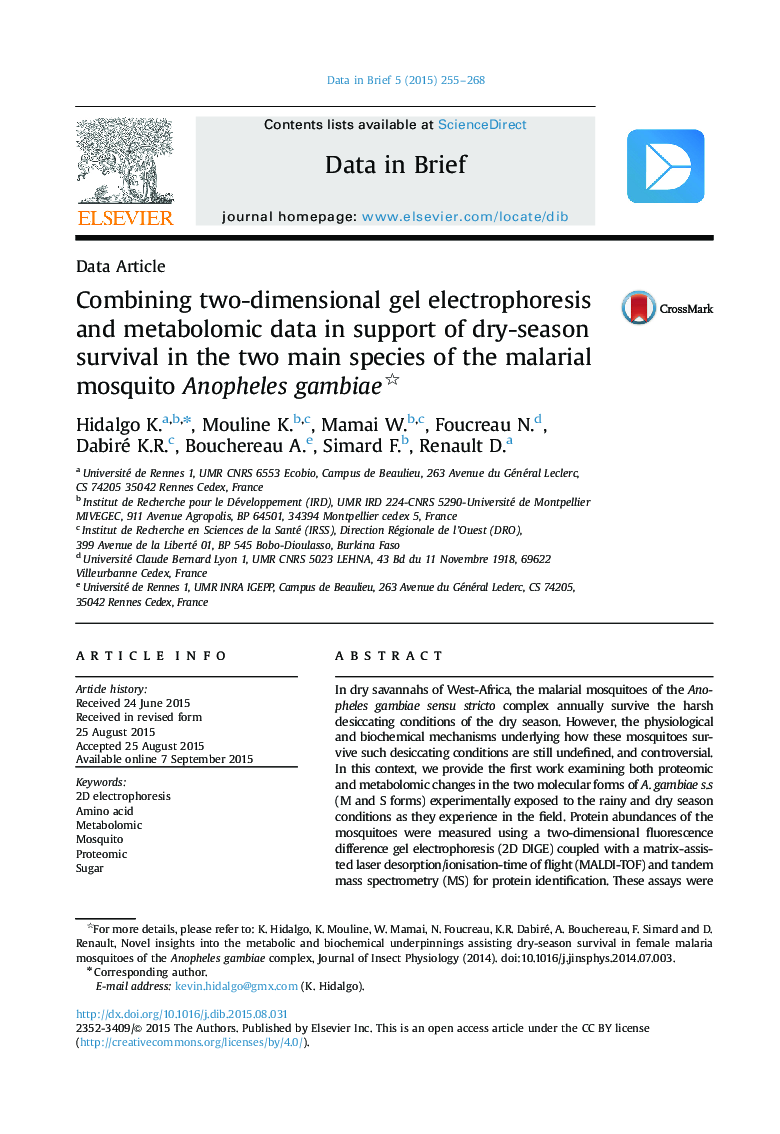| Article ID | Journal | Published Year | Pages | File Type |
|---|---|---|---|---|
| 174880 | Data in Brief | 2015 | 14 Pages |
In dry savannahs of West-Africa, the malarial mosquitoes of the Anopheles gambiae sensu stricto complex annually survive the harsh desiccating conditions of the dry season. However, the physiological and biochemical mechanisms underlying how these mosquitoes survive such desiccating conditions are still undefined, and controversial. In this context, we provide the first work examining both proteomic and metabolomic changes in the two molecular forms of A. gambiae s.s (M and S forms) experimentally exposed to the rainy and dry season conditions as they experience in the field. Protein abundances of the mosquitoes were measured using a two-dimensional fluorescence difference gel electrophoresis (2D DIGE) coupled with a matrix-assisted laser desorption/ionisation-time of flight (MALDI-TOF) and tandem mass spectrometry (MS) for protein identification. These assays were conducted by Applied Biomics (http://www.appliedbiomics.com, Applied Biomics, Inc. Hayward, CA, USA), and the mass spectrometry proteomics data have been deposited to the ProteomeXchange Consortium (http://proteomecentral.proteomexchange.org) via the PRIDE partner repository with the dataset identifier http://www.ebi.ac.uk/pride/archive/projects/PXD000294. The metabolomic analysis was conducted using both Acquity UPLC® system (for amino acid identification), and a gas-chromatography-mass spectrometry platform (for sugars identification). Metabolomic fingerprintings were assessed in the University of Rennes 1, UMR CNRS 6553 EcoBio (France). A detailed interpretation of the obtained data can be found in Hidalgo et al. (2014) [1] (Journal of Insect Physiology (2014)).
